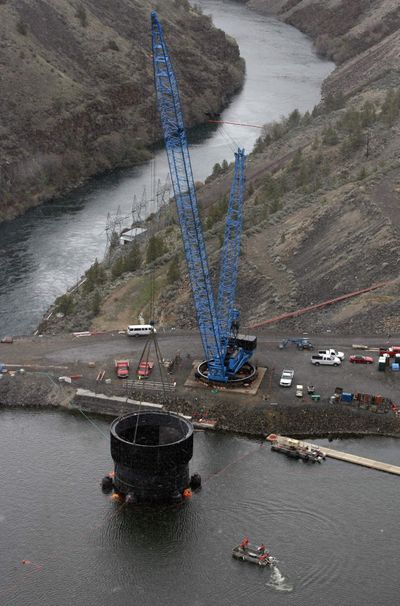Fish passage device collapses
Tower designed to help revive salmon runs ruined by dam

BEND, Ore. – Part of a $110 million project to restore salmon and steelhead runs in the Upper Deschutes Basin has fallen apart during construction, delaying the project at least four months and trapping fish that might be swimming through Lake Billy Chinook behind Round Butte Dam.
Project sponsors told the Bulletin in Bend they don’t know why the underwater tower fell apart.
It was about 40 feet in diameter and weighed 573,000 pounds. It was one of three major components of the fish passage facility.
The tower broke apart Saturday as workers readied it for assembly. One piece fell to the floor of the reservoir and another bobbed to the surface.
“Everyone’s just kind of dumbfounded right now about, geez, what happened?” said Bobby Brunoe, natural resources general manager with the Confederated Tribes of Warm Springs.
Portland General Electric and the tribes agreed to build the structure as part of their federal relicensing agreement. Construction began in 2007.
When the Pelton-Round Butte Dam complex was built in the 1950s and 1960s, the structures changed the water flow patterns in Lake Billy Chinook and caused migrating salmon and steelhead to lose their way, blocking the fish from reaching the ocean and killing off the Upper Deschutes populations.
The fish passage structure is designed to alter the lake’s currents and allow fish to be collected and trucked around the complex.
After investigators figure out what went wrong, crews will either repair or replace the tower pieces, which will probably take a minimum of four months, said Steve Corson, a PGE spokesman.
Biologists say they will add traps upstream and truck fish to the Lower Deschutes so they can swim to the Columbia River. They don’t know what will happen to fish already in the reservoir.